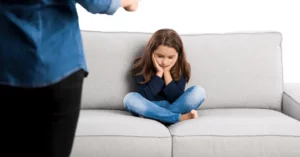AI Answer Evaluation Platform Live Now. Try Free Answer Evaluation Now
Cataclysm
A cataclysm is an event that causes widespread devastation and upheaval, often resulting in significant loss of life, property damage, and long-term consequences. The word “cataclysm” comes from the Greek “kataklusmos,” which means “a deluge or flood.” The term is commonly used to describe sudden, dramatic changes or upheavals, whether in the natural world or human society.

Natural disasters are the most common type of cataclysm. These include earthquakes, tsunamis, volcanic eruptions, hurricanes, tornadoes, and floods. Natural disasters can cause massive destruction and displacement of populations, and often require extensive rescue and recovery efforts to minimize the impact of the event.
Human-made disasters can also be classified as cataclysms. These include war, nuclear explosions, industrial accidents, and terrorist attacks. Such events can cause significant harm to individuals and communities, both physically and emotionally. In addition to the immediate damage, human-made disasters can also have long-term consequences, such as environmental pollution or political instability.
Cataclysms can have far-reaching effects on society, economies, and ecosystems. They can lead to changes in weather patterns, shifts in population demographics, and alterations to natural habitats. Cataclysms can also serve as a catalyst for innovation and change, as societies seek to recover and rebuild in the aftermath of disaster.
History
The concept of cataclysm has been present throughout human history, dating back to ancient civilizations. In Greek mythology, the flood myth of Deucalion and Pyrrha describes a cataclysmic event that destroyed all living beings except for a few who were saved on a ship. In the Bible, the story of the Great Flood in the Book of Genesis describes a cataclysmic event caused by God, which destroyed all living beings except for Noah and his family.
Throughout history, natural disasters such as earthquakes, volcanic eruptions, hurricanes, and floods have caused catastrophic damage and loss of life. The 1755 Lisbon earthquake, which resulted in an estimated 60,000 deaths, is considered one of the deadliest earthquakes in history. The eruption of Mount Vesuvius in 79 AD destroyed the cities of Pompeii and Herculaneum, resulting in the deaths of thousands of people.
In modern times, human-made disasters such as wars, nuclear explosions, industrial accidents, and terrorist attacks have also resulted in catastrophic consequences. The 1945 atomic bombings of Hiroshima and Nagasaki during World War II caused widespread destruction and resulted in the deaths of over 200,000 people.
In recent times, the world has experienced several cataclysmic events, including the 2004 Indian Ocean tsunami, the 2010 Haiti earthquake, and the ongoing COVID-19 pandemic, which has caused millions of deaths and significant social and economic impacts worldwide.
In summary, the history of cataclysm spans throughout human history and is marked by numerous natural and human-made disasters that have caused catastrophic damage and loss of life. The study of cataclysms is essential for understanding the power of nature and the impact of human actions on the world around us.
Toba Eruption
The Toba eruption is one of the largest volcanic events in Earth’s history and is believed to have occurred around 74,000 years ago, although some estimates place the eruption as far back as 110,000 years ago. The eruption took place in what is now Lake Toba, located on the Indonesian island of Sumatra.
The Toba eruption is believed to have been a supervolcanic eruption, which is an event where a volcano releases more than 1,000 cubic kilometers of material. The eruption is estimated to have released over 2,800 cubic kilometers of ash, rock, and sulfur into the atmosphere. This massive release of material caused a volcanic winter, with global temperatures dropping by as much as 5 to 15 degrees Celsius for several years after the eruption.
The volcanic winter caused by the Toba eruption had significant global consequences. It is believed to have disrupted ecosystems around the world, leading to mass extinctions of plant and animal species. The eruption also had a significant impact on human evolution. Some scientists believe that the eruption may have caused a genetic bottleneck in human evolution, with the human population possibly being reduced to just a few thousand individuals after the event. This theory is based on genetic studies that suggest a period of reduced genetic diversity in the human population around the time of the Toba eruption.
The Toba eruption also left an indelible mark on Earth’s geological and biological history. The eruption created a massive caldera, which is now Lake Toba, one of the largest lakes in the world. The ash and debris from the eruption can be found in sediment layers around the world, providing valuable information for scientists studying Earth’s geological history.
In conclusion, the Toba eruption was a catastrophic event that had significant global consequences. It disrupted ecosystems, caused a volcanic winter, and may have had a significant impact on human evolution. The Toba eruption is a reminder of the power of nature and the potential for catastrophic events to shape the course of history.[1]
Catastrophic Events in the History
Throughout history, catastrophic events have occurred that have had significant impacts on human civilization and the natural world. Some of the most notable catastrophic events in history include:
1. The Toba eruption (around 74,000 years ago): As mentioned earlier, the Toba eruption was a supervolcanic eruption that caused a volcanic winter and is believed to have had a significant impact on human evolution.[1]
2. The Black Death (1346-1353): The Black Death was a pandemic that swept through Europe and Asia, causing an estimated 75-200 million deaths, or around 30-60% of the European population.[2]
3. The Lisbon earthquake (1755): The Lisbon earthquake was one of the deadliest earthquakes in history, with an estimated 60,000 deaths. The earthquake also triggered a tsunami and widespread fires that destroyed much of the city.[3]
4. The eruption of Mount Tambora (1815): The eruption of Mount Tambora in Indonesia caused a volcanic winter that led to crop failures and famine in many parts of the world, including Europe and North America.[4]
5. The Spanish Flu (1918-1919): The Spanish Flu was a pandemic that infected an estimated 500 million people worldwide and caused between 50-100 million deaths.[5]
6. The Chernobyl disaster (1986): The Chernobyl disaster was a nuclear accident that occurred in Ukraine and resulted in significant environmental and health impacts, including an estimated 4,000 deaths due to radiation exposure.[6]
7. Hurricane Katrina (2005): Hurricane Katrina was one of the costliest and deadliest hurricanes in US history, causing an estimated 1,800 deaths and over $125 billion in damages.[7]
8. The COVID-19 pandemic (2019-present): The COVID-19 pandemic is a global health crisis caused by the SARS-CoV-2 virus, which has infected millions of people worldwide and caused significant social and economic impacts.[8]
These catastrophic events demonstrate the power of nature and the potential for human actions to have catastrophic consequences. Understanding these events is essential for preparing for and mitigating the impacts of future disasters.
Theory of Catastrophism
Catastrophism is a geological theory that was popular in the 18th and 19th centuries. The theory states that the Earth’s geological features, such as mountains, valleys, and canyons, were formed by catastrophic events, such as floods, earthquakes, and volcanic eruptions, rather than gradual processes over long periods of time.[9]
One of the earliest proponents of catastrophism was the French scientist Georges Cuvier, who proposed that the Earth had experienced a series of catastrophic events, or “revolutions,” that caused the extinction of entire groups of animals and plants. Cuvier believed that these events were followed by periods of re-population by new species.
Cuvier’s theory of catastrophism was influenced by the discovery of fossils that appeared to be from extinct species, such as mammoths and giant sloths. He believed that these species had been wiped out by catastrophic events, rather than gradual processes of evolution.
The theory of catastrophism was later challenged by the concept of uniformitarianism, which proposed that the Earth’s geological features were the result of gradual processes over long periods of time, such as erosion and sedimentation. Uniformitarianism became the dominant theory in the mid-19th century, thanks in part to the work of scientists like Charles Lyell, who argued that the Earth’s features could be explained by processes that were still observable today.
Despite the challenges to catastrophism, the theory continues to influence geological thinking today, particularly in the study of impact craters and other geological features that are the result of sudden catastrophic events. Catastrophism also remains an important concept in fields like evolutionary biology, where it is used to explain the mass extinctions that have occurred throughout Earth’s history.
In conclusion, the theory of catastrophism is an important part of geological history that helped shape our understanding of the Earth’s past. Although the theory has been largely supplanted by the concept of uniformitarianism, it continues to influence scientific thinking today and remains a valuable tool for understanding the processes that have shaped our planet.
Precautions
Cataclysmic events can have devastating effects on human lives and infrastructure. While it may not be possible to prevent these events from occurring, there are several precautions that can be taken to minimize their impacts. Some of these precautions include:
1. Disaster preparedness planning: Governments, communities, and individuals can take steps to prepare for potential catastrophes by developing disaster preparedness plans. These plans can include emergency response strategies, evacuation plans, and contingency plans for essential services like water and electricity.
2. Infrastructure improvements: Buildings, roads, and other infrastructure can be designed or retrofitted to be more resilient to disasters. For example, buildings in earthquake-prone areas can be constructed with reinforced concrete and flexible joints to better withstand shaking.
3. Early warning systems: Early warning systems can provide advanced notice of impending disasters, giving people time to evacuate or prepare. These systems can include earthquake alarms, flood gauges, and weather monitoring systems.
4. Risk mitigation: Governments and communities can take steps to mitigate the risks of disasters by identifying and addressing potential hazards. For example, building codes can be updated to require that buildings be constructed away from known flood zones or earthquake fault lines.
5. Education and training: Educating people about the risks and potential impacts of disasters can help them prepare for and respond to catastrophic events. This can include training in emergency response procedures, first aid, and disaster recovery.
6. International cooperation: Catastrophic events can have global impacts, so international cooperation and coordination are essential in preparing for and responding to disasters. This can include sharing information and resources, and coordinating disaster response efforts across national borders.
In conclusion, while cataclysmic events can have devastating consequences, there are precautions that can be taken to minimize their impacts. Disaster preparedness planning, infrastructure improvements, early warning systems, risk mitigation, education and training, and international cooperation are all important tools in reducing the risks of catastrophic events and ensuring that communities are prepared to respond when disasters do occur.
Levels
Catastrophic events can be classified into different levels depending on their severity and impact. Here are some common levels of catastrophic events:
1. Localized events: These events affect a specific region or area and may cause damage and destruction to local infrastructure and communities. Examples include tornadoes, wildfires, and floods.
2. Regional events: These events have a more significant impact than localized events and can affect entire regions or countries. Examples include hurricanes, earthquakes, and tsunamis.
3. National events: These are catastrophic events that impact entire countries and have far-reaching effects on infrastructure, economy, and human life. Examples include large-scale wildfires, pandemics, and terrorist attacks.
4. Global events: These are catastrophic events that have a significant impact on the entire planet and can alter the course of history. Examples include major asteroid impacts, supervolcanic eruptions, and global climate change.
Each level of catastrophic event requires a different level of response and preparedness. Localized events may be manageable with local emergency services and resources, while national and global events may require coordinated international efforts to mitigate the damage and assist affected populations. Regardless of the level of the catastrophic event, it is important to take steps to prepare and mitigate its impact to minimize the loss of life and property.
Proactive measures
some countries are known for their proactive measures in disaster management and preparedness. Here are a few examples:
1. Japan: Japan is one of the most disaster-prone countries in the world, with frequent earthquakes, typhoons, and volcanic eruptions. However, the country has developed one of the most sophisticated disaster management systems in the world, including advanced earthquake warning systems, tsunami barriers, and evacuation plans.
2. New Zealand: New Zealand is located on the Pacific Ring of Fire, making it prone to earthquakes, volcanic eruptions, and tsunamis. The country has a well-established Civil Defense system that includes emergency response plans, warning systems, and community education programs.
3. Norway: Norway is known for its advanced emergency response capabilities, including search and rescue operations, evacuation plans, and disaster risk reduction initiatives. The country has also invested heavily in early warning systems for tsunamis, avalanches, and landslides.
4. Singapore: Singapore is a small island nation that is vulnerable to natural disasters such as floods, landslides, and sea-level rise due to climate change. The country has implemented a comprehensive disaster management framework that includes early warning systems, evacuation plans, and public education campaigns.
It is important to note that many countries face unique challenges when it comes to catastrophic events, and each country’s approach to disaster management will depend on factors such as geography, climate, and resources. Nonetheless, these countries serve as good examples of proactive measures in disaster management and preparedness.
Cataclysm mythology
Cataclysm mythology refers to the concept of catastrophic events in various mythological and religious traditions. Many cultures have legends and stories that describe catastrophic events as a form of divine punishment or reckoning.
One example is the biblical story of Noah’s Ark, where God sends a catastrophic flood to cleanse the world of sin and start anew. In Greek mythology, the Titanomachy describes a catastrophic war between the Titans and Olympians that resulted in the destruction of much of the known world.
In Hinduism, the concept of pralaya refers to a series of catastrophic events that lead to the end of the world and the destruction of the universe. The Norse mythology speaks of Ragnarok, a catastrophic battle that results in the death of many gods and the destruction of the world.
Many of these myths and legends reflect the human fascination with catastrophic events and the fear of the unknown. They also serve as cautionary tales about the consequences of our actions and the need to live in harmony with nature and each other.
Conclusion
In conclusion, cataclysm refers to any catastrophic event that has a significant impact on the environment and human life. These events can take many forms, such as volcanic eruptions, earthquakes, hurricanes, tsunamis, asteroid impacts, and global pandemics. Cataclysmic events have occurred throughout history, shaping the course of civilization and leaving a lasting impact on the planet.
While it is impossible to predict when or where the next catastrophic event will occur, it is important to take steps to prepare and mitigate its impact. This includes developing emergency response plans, investing in early warning systems, and educating the public about disaster preparedness. By taking these proactive measures, we can reduce the loss of life and property and increase our ability to recover from these events.
Overall, cataclysm serves as a reminder of the power and unpredictability of nature, and the need for continued efforts to mitigate its impact on our lives and the planet.
Reference
[1] Mount Toba | Eruption & Facts. (n.d.). Encyclopedia Britannica. https://www.britannica.com/place/Mount-Toba
[2] Black Death – Causes, Symptoms & Impact. (n.d.). HISTORY. https://www.history.com/topics/middle-ages/black-death
[3] Lisbon earthquake of 1755 | Portugal. (n.d.). Encyclopedia Britannica. https://www.britannica.com/event/Lisbon-earthquake-of-1755
[4] Magazine, S. (n.d.). Blast from the Past. Smithsonian Magazine. https://www.smithsonianmag.com/history/blast-from-the-past-65102374/
[5] C. (n.d.). Spanish Flu: What Is It, Causes, Symptoms & Pandemic. Cleveland Clinic. https://my.clevelandclinic.org/health/diseases/21777-spanish-flu
[6] Chernobyl | Chernobyl Accident | Chernobyl Disaster – World Nuclear Association. (n.d.). Chernobyl | Chernobyl Accident | Chernobyl Disaster – World Nuclear Association. https://world-nuclear.org/information-library/safety-and-security/safety-of-plants/chernobyl-accident.aspx
[7] Hurricane Katrina – August 2005. (n.d.). Hurricane Katrina – August 2005. https://www.weather.gov/mob/katrina
[8] Coronavirus. (2023, March 30). Coronavirus. https://www.who.int/health-topics/coronavirus
[9] Catastrophism | The Foundation of Modern Geology – University of Illinois at Urbana-Champaign. (n.d.). Catastrophism | the Foundation of Modern Geology – University of Illinois at Urbana-Champaign. https://publish.illinois.edu/foundationofmoderngeology/catastrophism/



